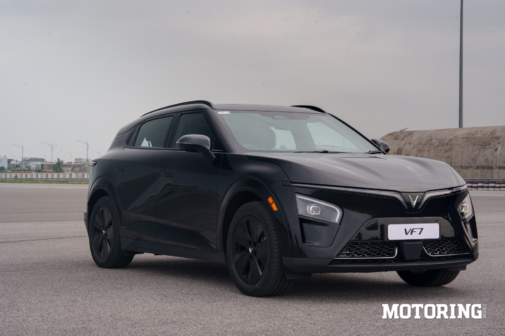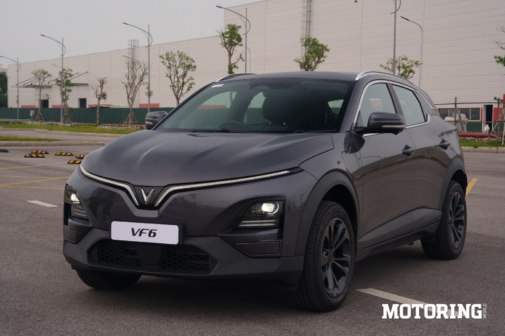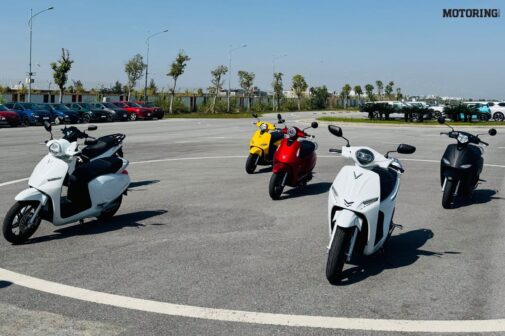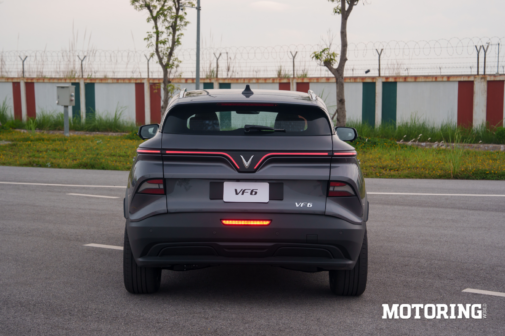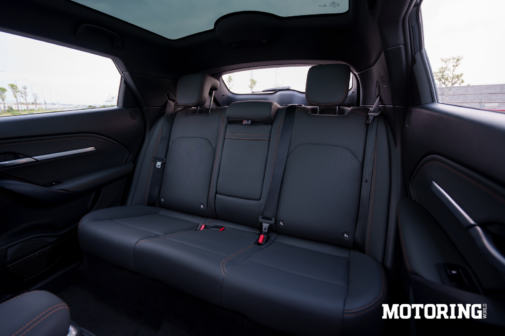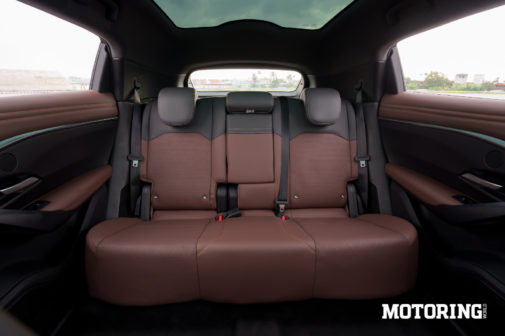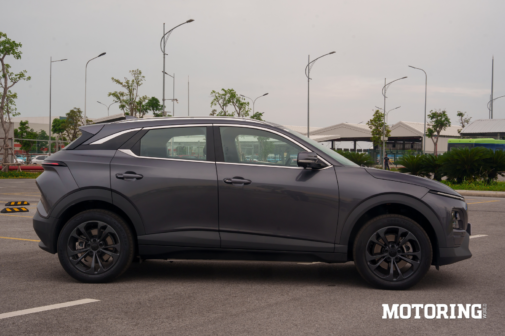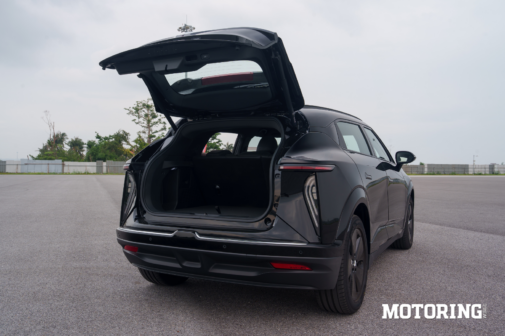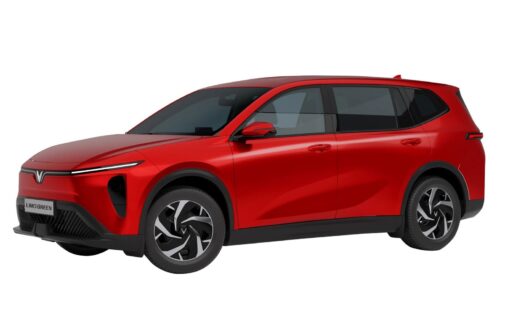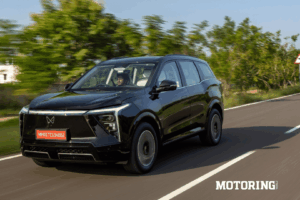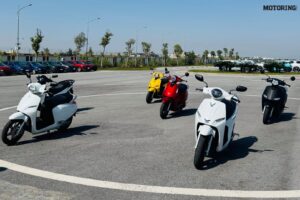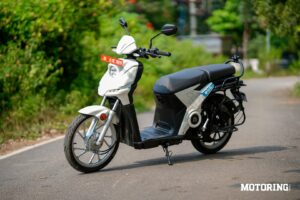Photographs by VinFast
Let’s dive straight into the question you’re all asking – who (or what) on earth is VinFast? The answer is fairly straightforward – it’s a Vietnamese auto-maker that’s so new you can still see the plastic wrapping on the seats. Established in 2017, it initially produced ICE cars – a sedan and a crossover based on the BMW 5 Series and X5, respectively – before pivoting entirely to BEVs in 2022. The firm has gone from zero to Vietnam’s best-selling car brand in less than a decade, a remarkable feat. Now, it’s betting the house on India, with a massive factory coming up in Tuticorin (TN) and two models – the VF6 and VF7 – all set for an India debut.
As a newcomer to the global stage, let alone India, VinFast faces a steep climb. India’s car buyers are notoriously price-sensitive, demanding premium features at budget prices, and the electric vehicle segment remains niche, with range anxiety a persistent concern. Add to that the challenge of building brand awareness and loyalty for a company as yet unknown outside Vietnam, and VinFast’s gamble seems rather audacious. Still, nothing ventured, nothing gained and all that.
I recently got a chance to (very briefly) drive both the VF6 and VF7 at VinFast’s factory test track in Vietnam, limited to a straight and a skid pad. While the experience was constrained, it offered initial impressions of design, build quality, interior comfort, and driving feel. Both vehicles ditch traditional instrument clusters for a head-up display (HUD) and rely on a central infotainment screen for additional data, a bold (and risky) choice for India’s tech-savvy, value-driven consumers. Here’s how they stack up.
The VF6, a sub-compact electric SUV, has a sleek, urban-friendly design by Torino Design. Its sharp lines, slim LED headlights, and compact stance (roughly 4.24 metres) give it a modern, approachable look that could appeal to urban buyers. The exterior feels and looks robust, with tight panel gaps and a solid heft to the doors, suggesting decent build quality. However, some plastic trim pieces around the wheel arches felt less premium. The VF6’s size is ideal for navigating India’s congested streets, but its untested durability in Indian conditions — potholes, dust, general mayhem — is a potential grey area that applies to the VF7 as well; VinFast’s lack of a legacy in automotive manufacturing may make buyers sceptical about long-term reliability.
The VF6 has a pretty decent cabin for its likely price point of around Rs 18 lakh. The seats are supportive, and the minimalist layout feels airy, though rear legroom is tight for taller passengers. The absence of a traditional instrument cluster takes getting used to; a HUD projects speed and basic info, while a 12.9-inch infotainment screen handles navigation and vehicle stats. The screen is responsive, with crisp graphics, but relying on it for critical data might frustrate drivers unfamiliar with such setups. Features like Level 2 ADAS, wireless charging, and a panoramic sunroof are impressive for the segment, but India’s price-conscious buyers may balk if these drive up costs. The cabin’s insulation is decent, but there was some road noise on the test track.
On the track, the VF6’s 198-bhp Plus trim (with 25.5 kgm of torque) felt very peppy on the straight, with smooth acceleration suited for sprints in different overtaking conditions. The skid pad revealed composed handling (inasmuch as taking a fast, wide U-turn could) but the steering felt a bit light, lacking feedback. The 381-km claimed range from its 59.6 kWh battery isn’t top-spec, with real-world performance in India’s heat and traffic likely to bring that number down. Overall, the VF6 drives confidently for urban use, but its dynamics need validation on India’s diverse road conditions.
The VF7 is a bigger car and consequently aims higher, with a bolder, more avant-garde design. Its sleek profile, aggressive front fascia, and 19-inch alloys give it a more premium vibe, rivalling the likes of the Hyundai Creta EV. Measuring around 4.55 metres, it’s well-sized as an Indian family car at the premium end of the market, with a likely price of around Rs 25 lakh – 30 lakh. Build quality feels solid, with a reassuring weight to the chassis and high-quality paint finishes. However, some interior plastics, like those on the door panels, felt less refined than competitors. As with the VF6, VinFast’s newness means buyers will likely question its ability to withstand India’s punishing conditions, compared to established brands like Tata or Mahindra. The VF7’s striking looks are a strong start, to be sure, but durability is an unanswered question as of now.
The VF7’s cabin is a highlight, blending tech and comfort. Spacious for five, it offers plush vegan leather seats and a driver-centric layout. The HUD is clear but takes some getting used to, while the large infotainment screen is a standout, offering seamless connectivity and ADAS controls. Features like a 70.8-kWh battery, Level 2 ADAS, and a premium sound system position it as a tech-heavy contender. Again, the heavy reliance on the touchscreen for functions might overwhelm less tech-savvy Indian buyers – and globally, OEMs are going back to physical buttons and switches. Noise insulation is better than the VF6, but some vibrations on the skid pad suggest refinement could improve.
I drove the AWD Plus trim, with 344-bhp and 51 kgm of torque, and it offered robust acceleration; the claimed 0-100 kph figure of 5.8 seconds felt entirely reasonable. Handling on the skid pad was confident, with minimal body roll, but the steering felt a bit vague. The claimed range of 450 km (Eco) and 431 km (Plus) is better than the VF6, but still a little on the lower end of the scale – range anxiety will loom, without widespread charging infrastructure; however, VinFast says it will bring its own charging network with it, apart from tying up with existing charge providers. All told, the VF7 feels polished for a new brand, but its dynamics need real-world Indian testing.
VinFast enters India as a relative unknown, a significant hurdle in a market loyal to brands like Maruti Suzuki, Tata, and Hyundai. Building awareness will require aggressive marketing, leveraging the VF6 and VF7’s modern designs and tech to stand out. VinFast’s $500-million investment in Tamil Nadu, including a plant opening this month, shows its commitment to our market, but translating this into trust is another matter. Indian buyers demand everything — style, tech, reliability — at rock-bottom prices. EVs, while growing, remain niche, with only 2 per cent of passenger vehicle sales in 2024. Range anxiety, exacerbated by India’s patchy charging network, could deter buyers, especially for a brand without a proven track record. VinFast’s strategy of local assembly may keep prices competitive, but after-sales service and spare parts availability will be critical. Loyalty will hinge on delivering consistent quality and addressing concerns swiftly, something VinFast, as a nascent player, has yet to prove.
That said, the VinFast VF6 and VF7 show promise as stylish, tech-laden EVs tailored for urban India. The VF6’s compact size and affordability make it a strong contender for city commuters, while the VF7’s premium features and performance could strike a chord with aspirational buyers. Both impress with modern designs, decent build quality, and feature-rich interiors, though their HUD-centric dashboards may be a polarising factor. Driving impressions, while limited, suggest cars that are capable urban performers, but their true mettle awaits India’s conditions. As Vietnam’s top-selling EVs, they carry undoubted momentum, but India’s market is unforgiving. A full verdict will only emerge once we test these SUVs thoroughly in India, but for now, VinFast’s ambition is clear – and impressive.
AUTODATA
VinFast VF7 Plus AWDPOWERTRAIN
Battery:
Max Power:
Max Torque:
Range:
70.8 kWh
260 bhp
50.98 kgm
431 km
TYRES
F/R: 245/45 R20
DIMENSIONS
L/W/H (mm):
Wheelbase:
Ground Clearance:
Kerb Weight:
4545/1890/1635.75
2840 mm
190 mm
2185 kg
PRICE
TBA
AUTODATA
VinFast VF6 PlusPOWERTRAIN
Battery:
Max Power:
Max Torque:
Range:
59.6 kWh
201 bhp
32.63 kgm
381 km
TYRES
F/R: 225/45 R19
DIMENSIONS
L/W/H (mm):
Wheelbase:
Ground Clearance:
Kerb Weight:
4241/1834/1580
2730 mm
190 mm
2020 kg
PRICE
TBA










